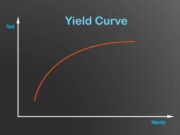
What is ‘Tangible Net Worth’
It is most typically used to calculate a company’s net worth by excluding any value generated from intangible assets, such as copyrights, patents, and intellectual property, from the computation. Tangible net worth may be calculated by subtracting the entire value of a company’s tangible assets from the total value of the company’s liabilities. Individuals may also determine their net worth by using the same method as businesses: total tangible assets minus total debt obligations.
Explaining ‘Tangible Net Worth’
When a company’s tangible net worth is calculated, the entire value of the company’s physical assets is subtracted from the total value of the company’s outstanding obligations. This calculation is based on the data presented on the company’s balance sheet. This figure is an estimate of the company’s liquidation value in the event of bankruptcy or sale.
How is Tangible Net Worth Calculated?
To calculate tangible net worth, you need to subtract a company’s liabilities and intangible assets from its total assets. The formula for tangible net worth is:
Tangible Net Worth = Total Assets – Liabilities – Intangible Assets
Total Assets: This includes all the assets that a company owns, including both tangible and intangible assets. Tangible assets are assets that have a physical presence, such as property, equipment, and inventory.
Liabilities: This includes all the debts that a company owes to others, including loans, accounts payable, and other financial obligations.
Intangible Assets: This includes assets that do not have a physical presence, such as patents, trademarks, copyrights, and goodwill.
By subtracting the company’s liabilities and intangible assets from its total assets, you can determine its tangible net worth. This calculation provides a more accurate representation of the company’s true value, as it takes into account both tangible and intangible assets.
Positive and Negative Factors of Tangible Net Worth
There is one major advantage to using a tangible net worth calculation rather than a total net worth calculation. This is because it is much easier to place an accurate value on physical assets than it is to evaluate intangible assets such as customer goodwill or intellectual property, which are difficult to value accurately. Intellectual property encompasses items like proprietary technologies and designs, among other things.


































